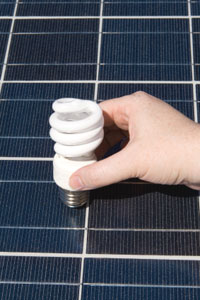Solar Radiation Sustains the Energy Balance on Earth
Download Audio VersionSolar radiation is energy that is transmitted or radiated in the form of sunlight (particles and electromagnetic waves). The waves differ in length, speed, and frequency. Visible light, x rays, and ultraviolet rays have a short wavelength while infrared light has a long wavelength.
Origin and Processes
The core of the sun is characterized by high pressure and temperatures that drive fusion. Gamma rays are emitted and re-emitted. Light in the form of photons makes a long journey to the Earth’s surface. Photons are converted into wavelengths because they lose energy. Sunlight enters the atmosphere as a combination of different wavelengths. It is distributed unevenly in different regions (by latitude). There is a surplus of energy in areas that are close to the equator. The opposite occurs at the poles which receive less sunlight. There is a deficit of energy, and the surplus at the equator flows to regions that receive less sunlight. Different processes occur once light enters the atmosphere – refraction, transmission, insolation, reflection, and absorption.
Measuring Radiation

There are different methods to determine the amount of sunlight that different locations receive. Insolation and radiance are two methods to measure it. The latter measures power density and takes into account weather conditions and location. Scientists use pyrheliometers and pyranometer to take measurements. Sunshine recorders are also used to determine the amount of sunlight at different locations. This method allows scientists to determine solar insolation. It is also estimated by using satellite images to obtain cloud cover information. Basically, insolation measures the amount of sunlight that reaches the earth’s surface. It can be measured during a day or hour and is referred to as daily and hourly irradiation, respectively. The aim is to predict radiation over a certain period. There are many factors that influence the distribution of irradiance. These include the Earth’s orientation, latitude, transmissivity, cloudiness and other atmospheric conditions, time of the day/year, and others. Some methods measure sunshine duration and take into account the length of the day, elevation, declination, latitude, and other factors. Other methods measure daily and potential irradiance, along with latitude in radians, day of the year, solar declination angle, and sunshine hours a day. Other factors that play a role include mean daily irradiance, intensity, and daylight period.
Radiant Energy
The energy of the Sun’s (electromagnetic) waves is used in telecommunications, lighting and heating, radiometry, and other fields. It is used for cooling and heating of commercial and residential units, cooking, and powering different household and other appliances. Hydronic and electrical wire systems are often installed in houses and offices. Hydronic systems use hot water to provide heating. It is pumped through tubes and pipes and acts as a heat transfer fluid. There are different types of hydronic systems, including pumps and boilers.
Importance of Solar Radiation
The energy that drives hydrologic systems, ecosystem dynamics and processes, and climate systems comes in the form of sunlight. It plays a vital role and helps maintain the energy balance on Earth. Plants use energy for respiration and photosynthesis. The growth rate of plants is proportional to the amount of light they receive. A greenhouse, for example, requires electricity, fuel, water, and other utilities. However, artificial lighting cannot substitute natural light which is one of the most important factors for plant growth. Factors to consider include intensity during different times of the year and the amount of daily light. The angle at which sunlight reaches the Earth’s surface changes throughout the year and during different times of the day. Intensity varies depending on moisture content, the atmosphere’s composition, and high and low sun angles. With these factors in mind, radiation is important for fruiting, flowering, and shoot and stem growth. It also plays a vital role in leaf expansion and germination. Sunlight regulates plant development and growth. Activities such as irrigation, application of fertilizers, and sowing are timed in such a way that plants receive the optimal amount of sunlight. It is not only plants that need sunlight for growth. All species, including microorganisms, corals, invertebrates, amphibians, and mammals depend on solar radiation. It drives ocean circulation and life and weather conditions.
How the Earth and Sun Interact
A number of factors play a role, including the angle of the Earth’s axis, changes in the orbit, alignment, and others. All these influence the way in which sunlight arrives and is distributed on Earth. For example, we will observe less seasonal differences if the angle of the axis changes. Scientists predict colder winters and warmer summers if the angle is greater. Seasonal differences are determined by the amount of solar energy received. This amount changes when the distance between the Sun and the Earth changes. This cycle takes more than 95,000 years.
